Introduction
Nestle is a multinational company that was started by Henri nestle in 1867 with its headquarters in Vevey Switzerland. The company has grown to be one of the largest food manufacturers in the world having 500 factories with a presence in 86 countries. Nestle has a dedicated portfolio of a wide range of products manufactured for the local and international markets. Nestle makes its presence known in those markets using properly designed local and international marketing strategies. The company’s products are Lactogen for infants, confectioneries, coffee, chocolate drinks, Nescafe, and milk among others. This research focuses on Nescafe, which is one of the company’s widely consumed products in the UK and other global markets.
Synopsis of the report
This report presents an investigation of the strategic approaches that Nestle uses to position its products on the market with a specialized focus on Nescafe and the key product of choice (Hughes 2014). It is demonstrated in the report that various forces and levels of competition enable the company to design the right marketing strategies, particularly at the international level to position its Nestle products competitively in the market while ensuring that the needs and wants of customers are met.
Nestle International Strategy Analysis
Local Marketing and International Analysis
According to Brassington and Pettitt (2006), the role of Nestlé’s international and local marketing strategies is to communicate brand messages to the consumers of its brand of products including Nescafe. It has been demonstrated in the UK that the company’s marketing strategies have moved the Nescafe brand into the market leading to increased sales, improved consumer trust, and enhanced knowledge about the product.
Cova (2014) notes that information gained from the market enables the company to fulfill its information needs. Nescafe is a brand-oriented and not a system-oriented product. Figure 1 illustrates the nature of marketing.
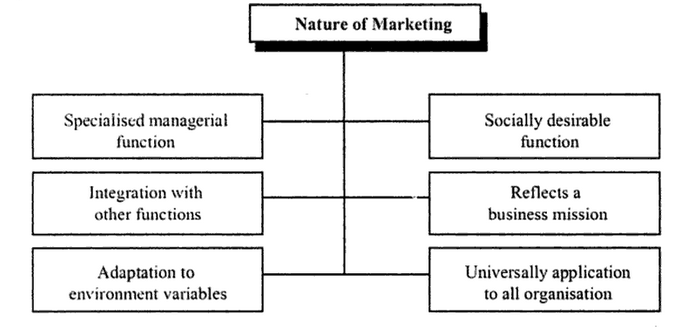
Jones (2014) identifies consumer attributes, market segment data, opportunity assessments, contractual agreements, alliances in the form of joint ventures, and consortia as the variables that drive Nestlé’s international and local level strategies.
Nature of marketing
Marketing is a dedicated managerial function at both international and local levels which Nestle uses to source for ideas and generate products that are designed to address a wide variety of customer needs and expectations. According to Kotler and Armstrong (2010), marketing is a socially acceptable function that reflects Nestlé’s universally applicable business mission.
Figure 2. Marketing Functions.
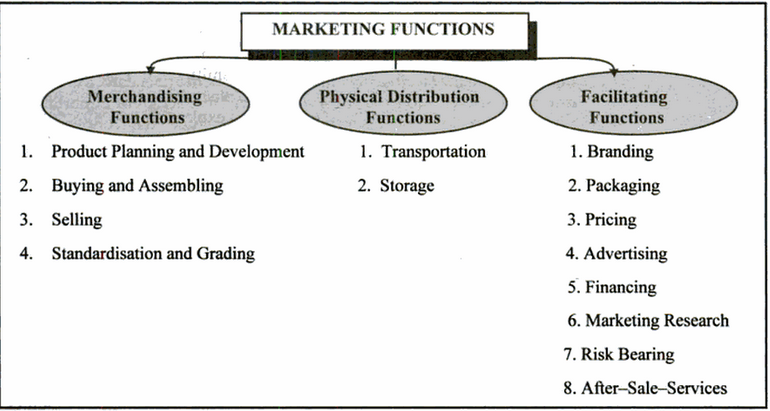
For instance, Nestle uses market information to conduct complete internal and external marketing audits to gather the information that enables it to competitively position itself in the market. That is in line with Pickton and Broderick’s (2005) argument who assert that Nestle designs different varieties of Nescafe packaged in different forms by incorporating nutritious coffee with soluble ingredients to appeal to the customer. The results include increased consumer satisfaction, provision of high-quality drinks, facilitation of choices, and price stabilization.
Current trends
The current global marketing environment keeps on evolving with new strategic demands that are driven by perceptions, labor costs, growing foreign economies such as China and Africa, and high tariff structures. The local environment is driven by product obsolesce and market saturation.
Local and International Environment (PESTEL Analysis)
Political
Nescafé is sold in different countries with different regulations. However, the product has done well in major markets because of Nescafe’s features that are designed to comply with the target market regulations (Zlatevska, Dubelaar & Holden 2014). Besides, the company complies with tax and employment laws.
Economic factors
Nestle has created various brands of Nescafe by investing in research and development in 86 countries (Waworuntu, Wantah & Rusmanto 2014). However, issues such as changing currency values and other economic factors have adversely affected the company’s profitability. Nestle continuously uses indicators such as currency exchange fluctuations, price levels, monetary supply policies, and interest rates to formulate its marketing strategies.
Social Factors
Nescafe is designed to meet the needs and quality expectations of target customers. Here, Varadarajan (2014) observed an increase in the use of Nescafe in different markets especially in India due to varieties that are designed to meet the cultural and social needs of each market segment. Changing consumer attitudes, lifestyle, and behavior are the underlying drivers of product design. The other underlying factors include caste, social values, beliefs, mobility of labor, and cultural heritage.
Technological
Nestle uses the best technologies that are consistent with government investment policies, research and development, and patenting to produce Nescafe. Typically, the high-quality manufacturing process is illustrated in figure 4. Zaa1awa2
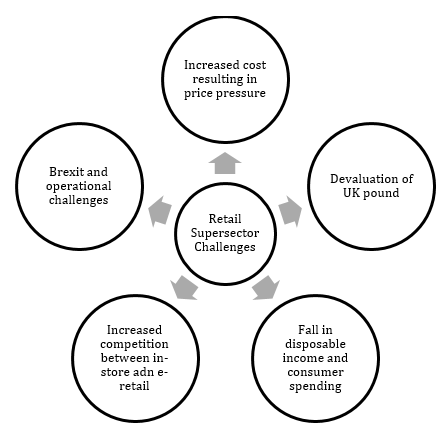
The key elements where technology adds value include cultivation, processing, blending, roasting, grinding, and making Nescafe soluble for consumption.
Environmental
Nestle has made commitments to respect the environment by using green technologies and other sound business practices. In Indian just like in the UK, it has been shown that Nestle has strategies in place to design environmental policies based on direct-action and indirect-action forces to fulfill the requirements of the ecological and demographic environments.
Legal
Nestle provides a safe and healthy working environment for its members.
Marketing concepts approaches and local and international level
Market entry
Nestle makes low-cost entries into target markets. A typical example is an entry into the Indian market (Varadarajan 2014). Market entry drivers include low product costs, secure key suppliers, and skills deployment. Nestlé’s mode of entry includes joint ventures, alliances, wholly-owned subsidiaries, and exports. Factors to consider when making entries include economic distance, degree of market knowledge, cultural values, political risks, and timing.
Ansoff Mix
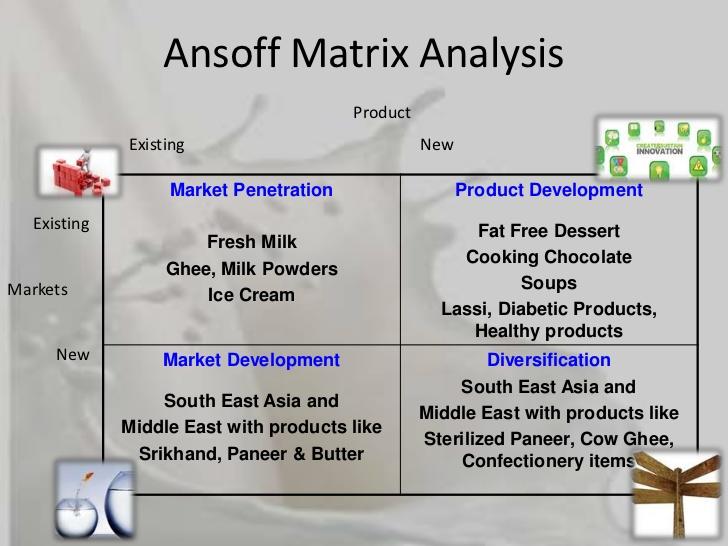
Nestlé’s Ansoff mix is illustrated in figure 6 which relates the product factors with the target market.
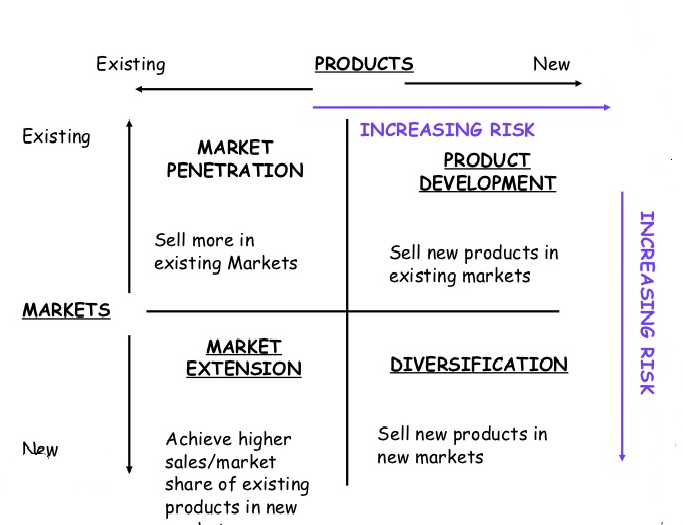
The company tries to increase its presence and capitalize on existing markets to increase profits. According to Varadarajan (2014), the company tries to increase the use of existing customers by diversifying product offerings such as Nescafe brands in line with different customer needs and expectations.
Market approaches
The company uses physical distribution channels and service agencies to market its wide range of products. Nestlé’s approach is to use a content strategy, market engagements, and integrated messages to target markets with different characteristics.
Acquisition and Retention
Nestlé’s sustainability review shows that different mergers and acquisitions provide a competitive edge in different markets.
Market Segmentation: Nestle

Nestle has integrated mass marketing, product differentiation, target marketing, market segmentation, and product positioning approaches in its market segmentation concept as shown in figure 7.
Segmentation need
Nestle uses lifestyle, age, personalities, convenience, and occupation of the target market to create market segments according to different consumer behavior and Nescafe brands (Mridila 2014). In theory, the rationale of market segmentation is to identify customer tastes, needs, priorities, and design the right marketing strategies that are unique to each market segment.
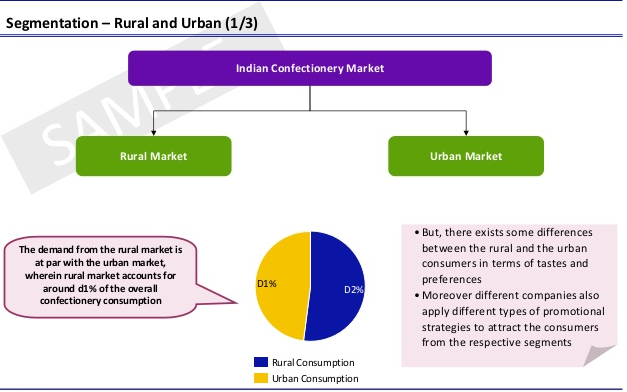
Demographic
Nestle uses its resources wisely to create appealing products to the market. Besides, the demographic factors that are used to design marketing strategies include the age of the target customers, families, regions, socio-economic status, and gender.
Geographic
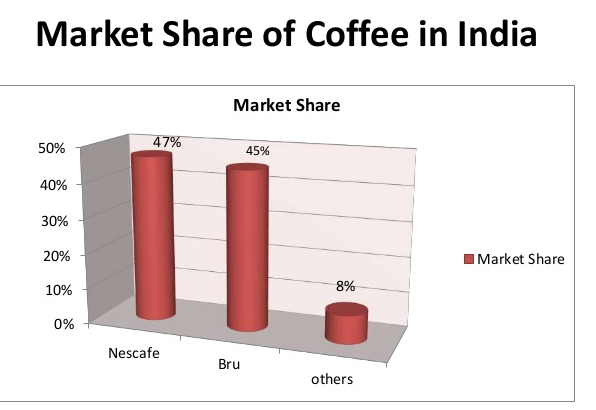
Nescafe has a 47% market share compared with competing beverages. Because of the economic downturn that adversely affected the UK economy, the level of consumption of Nescafe declined by 41.9% in 2009 compared to the sales in 2008.
Psychographic
Nestle markets Nescafe as a drink for the affluent segment of society. The other approaches that define the psychographic marketing of Nescafe include people’s lifestyles and health as well as the economic benefits of the customers (Mridila 2014).
Behavioral
The maxim ‘feeling like getting recharged’ drives the behavioral segmentation of Nescafe’s target market and its attributes. Nestle has segmented the market for Nescafe into a light, medium, and heavy drinkers.
Market targeting
Nestle targets coffee drinkers who are interested in high-quality drinks. A person can make a Nescafe drink anywhere in the family. Nestle has made 100 Nescafe brands that consumers use to prepare energy drinks. According to Mridila (2014), the target market consists of people of different age categories.
Differentiated marketing
Nestle uses differentiated marketing to address the different needs and expectations of the people in the market. Nescafe is designed to target busy people.
Market positioning
It has been established that 9% of the youth are drinkers of coffee which makes them be 1% of the global consumers of coffee. Payaud (2014) established that Nestle uses the brand positioning process which consists of stakeholder needs, opportunity modeling, brand platform, brand identity, brand architecture, and continuous evaluation and development.
Perceptual map
The facts that emerge due to the use of perceptual maps are competitive pricing and accurate positioning of Nescafe in the correct price category. Typical analysis shows that Nescafe is placed on the upper right-hand side of the quadrant which shows high quality and convenient to use.
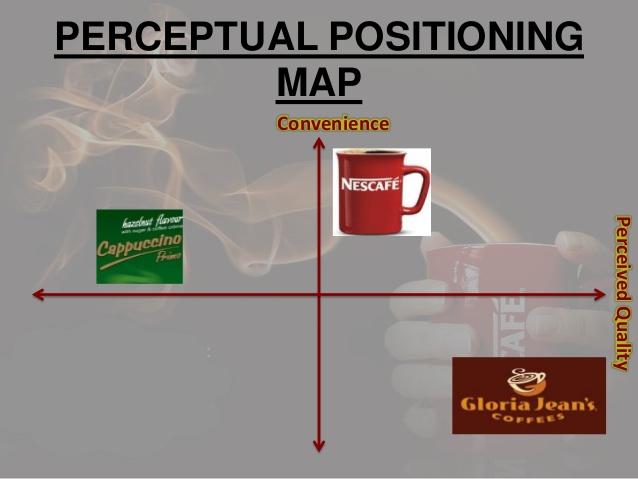
Marketing Strategies of the 7Ps
Price
In theory, marketing strategies are driven by pricing, distribution, promotion, and product policies. Besides, the international marketing environment has distinct characteristics that have influenced the way Nestle markets Nescafe (Ailemen & Folashade 2014). The marketing strategies for Nescafe are based on a strong marketing mix of 7Ps, which are the drivers of a product with a strong global appeal (Jackson et al. 2014). The pricing of the market segment is shown in table 1.
Table 1. The pricing of the market segment.
Nestlé’s pricing mechanism is based on making comparisons with the prices of competing brands and quantity discounts which influence the degree of pricing strategy. Piercy, Cravens, and Lane (2012) affirm that the company is known to decrease prices even to half the previous level of competition in the marketing environment is intense.
Place
Nestle uses supermarkets and other outlets to reach the customer. While 90% of Nestlé’s products are sold in Europe, in theory, and practice, place is a critical element that Nestle uses to reach the target market based on the FMG distribution channel. The company uses channel partners, specialized buildings, air-conditioned refrigeration facilities, and order fulfillment centers, and Cross-Dock facilities to reach the destination market.
Promotion
The company uses 360-degree promotional activities on social media, TVs, and radio commercials to reach the target market. Nestle is known to use 40% of its budget on advertising its Nescafe brand using different media outlets.
Product
Nestle has a big product portfolio. Nescafe is one of its outstanding products.
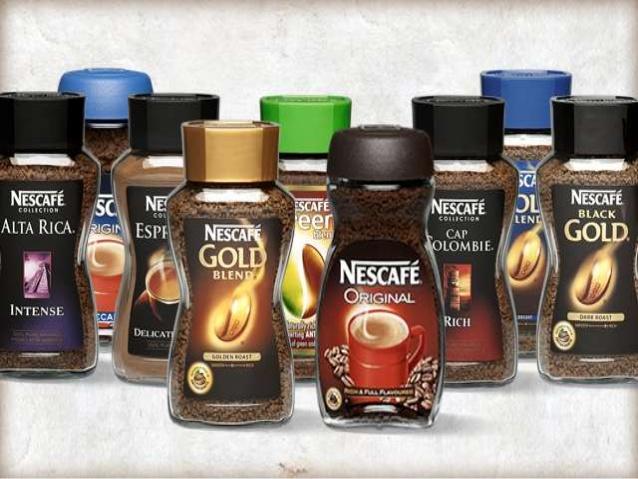
Figure 2 shows the relative share of Nescafe (13%) and other product portfolio compared with leading brands in the world.
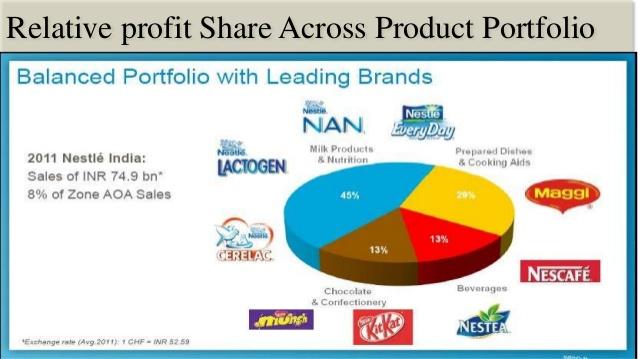
Nestle has endeavored to brand its products according to customer needs and expectations as shown in figure 2.
People
Employee’s activities are aligned with the company strategy and objectives which translate into performance goals of different teams.
Process
Trust is created by the provision of high-quality Nescafe products. The employees communicate brand messages to the customers.
Physical evidence
The packagings of different varieties of Nescafe constitute an important aspect of promoting the product. Nestlé’s Nescafe Coffee packages are designed with cardboard box enclosures. Glass is used to make the containers appealing.
Branding
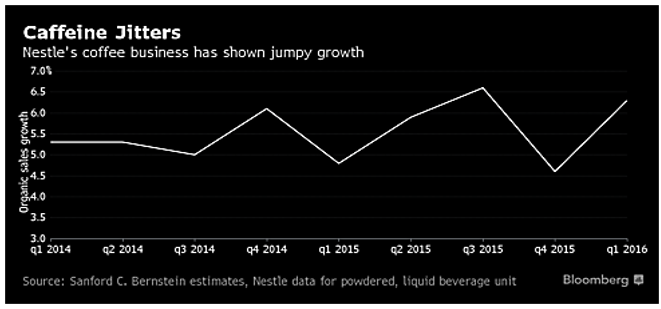
The graph on the sales of Nescafe that is due to branding shows an upward trend for the company’s products as shown in figure 12.
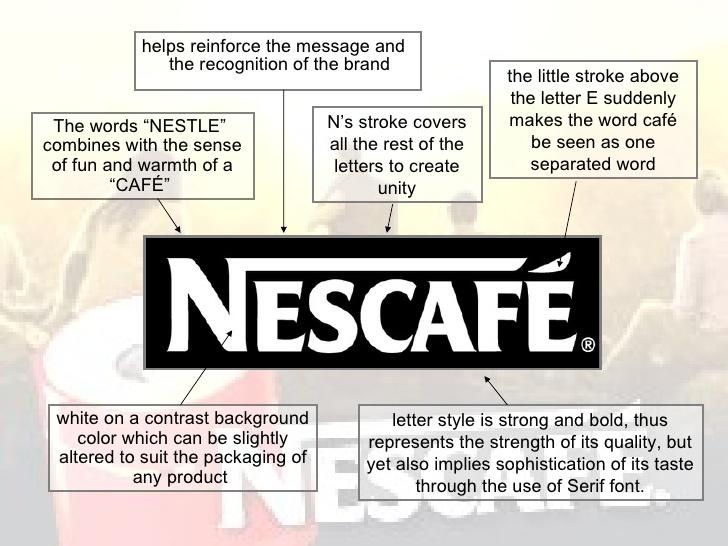
Recommendations and conclusion
Deducing from the study, it is worth recommending that the role and nature of international marketing strategies should be investigated further to determine how the internet and a wide array of applications can be used for better outcomes. The study has revealed a wide range of strategic factors underpinned by the marketing concepts, economic, behavioral, attitudinal, social, compliance with the legal environment, technological factors to position to products in the local and international markets. In conclusion, Nestle uses international and local marketing strategies to penetrate the markets, position its products especially Nescafe, drive up sales, and gain competitive advantages.
Reference List
Ailemen, O & Folashade, O 2014, ‘Working capital management and profitability of the manufacturing sector: an empirical investigation of nestle nigeria plc and cadbury nigeria plc’, Global Journal of Management And Business Research, vol. 4, no.14, pp.1-20
Brassington, F & Pettitt, S 2006, Principles of marketing, Financial Times Press, London.
Cova, B 2014, Re-branding brand genericide. Business Horizons, vol.3, no.57, pp. 359-369.
Hughes, D 2014, ‘European food marketing: adding value in mature food markets through market segmentation and product differentiation’, EuroChoices, vol. 2, no.13, pp. 20-26.
Jackson, M, Harrison, P, Swinburn, B & Lawrence, M 2014, ‘Unhealthy food, integrated marketing communication and power: a critical analysis’, Critical public health, vol. 4, no, 24, pp. 489-505.
Jones, E 2014, ‘An empirical assessment of consumers’ preferences for coffee’, Journal of Food Distribution Research, vol. 3, no. 45, pp. 210-222
Kotler, P & Armstrong, J S 2010, Principles of marketing, Pearson Higher Education, New York.
Mridila, F. S 2014, Marketing on the Internet of Nescafé Alegria Machine, BRAC University, Dhaka City.
Payaud, M A 2014 ‘Marketing strategies at the bottom of the pyramid: Examples from Nestlé, danone, and procter & gamble’, Global Business and Organizational Excellence, vol. 2, no. 33, pp. 51-63.
Pickton, D & Broderick, A 2005, Integrated marketing communications, Financial Times Press, London.
Piercy, N F, Cravens, D W & Lane, N 2012, ‘Sales manager behavior-based control and salesperson performance: the effects of manager control competencies and organizational citizenship behavior’, Journal of Marketing Theory and Practice, vol. 1 no. 20, pp. 7-22.
Varadarajan, R 2014, ‘Toward sustainability: public policy, global social innovations for base-of-the-pyramid markets, and demarketing for a better world’, Journal of International Marketing, vol. 2, no. 22, pp. 1-20.
Waworuntu, S R, Wantah, M D & Rusmanto, T 2014, ‘CSR and financial performance analysis: evidence from top ASEAN listed companies’, Procedia-Social and Behavioral Sciences, vol. 1 no. 164, pp. 493-500.
Zlatevska, N, Dubelaar, C & Holden, S S 2014, ‘Sizing up the effect of portion size on consumption: a meta-analytic review’, Journal of Marketing, vol. 3, no. 78, pp. 140-154.